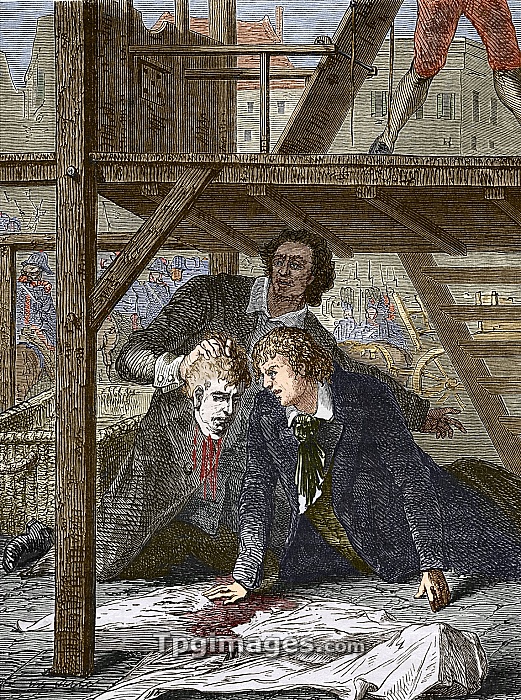
Coloured engraving showing the examination of a guillotined head. In a novel Alexandre Dumas had claimed that a head still retained its senses two hours after decapitation, giving rise to a controversy as to whether or not death was instantaneous. If not the guillotine could be considered a cruel method of execution. The public execution of 20 brigands led by the notorious Schinderhannes, in 1803, gave the Medical Association of Mainz the opportunity to conduct a range of experiments on the executed bodies. Two doctors remained beneath the scaffold and examined the decapitated heads following execution. They obtained no response from the heads and demonstrated that life was extinct and death instantaneous. Therefore guillotining could be considered a humane method of execution.
| px | px | dpi | = | cm | x | cm | = | MB |
Details
Creative#:
TOP06665045
Source:
達志影像
Authorization Type:
RM
Release Information:
須由TPG 完整授權
Model Release:
NO
Property Release:
NO
Right to Privacy:
No
Same folder images:

 Loading
Loading